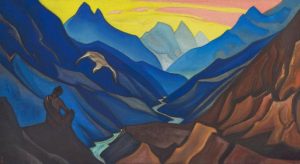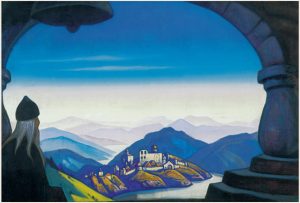The Theosophical Attitude
Theosophists actively participate in world affairs and follow both positive and critical news about the world situation. In doing so, they rely on reputable and well-founded sources of information and are aware of the different working methods of the various media (keywords: propaganda, fake news, troll factories, disinformation campaigns, conspiracy theories, etc.).
They are aware that in our modern information age of fast-paced mass media, lies and falsifications with destructive intent are increasingly being spread. They regard these as an effective and damaging weapon.
Personal life is organised in a sensible and thoughtful manner in order to fulfil the responsibilities of partnership and family. The opportunity to engage intensively with theosophical teachings often only arises after the age of 60. However, progress at this age is influenced by the studies and spiritual training that have been completed ‘on the side’ in previous decades. The age of spiritual training in monasticism, in sheltered monasteries and protected hermitages, is over.
Theosophical training aims to bring thinking into a living format. For this purpose, the more than 100 texts provided on theosophy-contemporary.com (such as the text ‘In Motion’, which can be found using the integrated search function) and other sources can be consulted. The three central teachings we have named (Rudolf Steiner’s anthroposophy, Agni Yoga and the works of the Tibetan published by Alice Bailey) all originate from the first half of the last century. This time factor must always be taken into account in in-depth study. For the development of living thinking, it is essential to include ‘common sense’.
To illustrate an approach to ‘active’ thinking, Tolkien’s ‘Lord of the Rings’ saga can be used as an analogy. The participants in the events – or ‘beings’ – can be roughly divided into four groups:
- The hobbits and humans
- The rulers and kings of various peoples
- The Elves as a group of beings that differ in many characteristics.
- The wizards or Istari.
Also worth mentioning in the saga is the group of dwarves with their protagonist Gimli. They represent the large group of elemental beings that elude the direct perception of humans of our time.
Tolkien unites these groups in a common struggle against evil, which is personified by beings who themselves belong to these groups.
The fact that these groups have drifted apart over eons can be seen as a result in today’s reality.
Speculation that Tolkien’s portrayal refers to the two world wars does not sufficiently explain the deeper commonality of the events. Rudolf Steiner’s teachings, on the other hand, report in detail on distant periods of human evolution. At that time, the various groups and natural kingdoms still existed together, similar to Tolkien’s saga. Humans and hobbits formed one group, elves or devas/angels another. In early times, the latter still lived in regions of the planet accessible to humans. Another group was made up of rulers and kings, many of whom originally came from other ‘universes’ or higher planets and promoted evolution.
Humans and halflings have intermingled to such an extent that it is no longer possible to perceive them separately. The rulers and original kings, who entered evolution with a wealth of experience and knowledge, withdrew from the normal senses. They are now at home in the brotherhoods of various origins on the astral and mental planes. The average person has only a faint, rudimentary memory of their possible existence. Both the ‘whites’ and the “blacks” eluded direct perception in accordance with the cosmic law of ‘free will,’ which is to be developed in humanity. The devas or angelic hierarchies continue to have their own realm and status within their own parallel evolution, with a special task that is invisible to humans. The group of ‘dark ones’, however, has remained at the level of lower instincts and emotions.
Reading Tolkien’s saga under this premise, the following becomes apparent: the primordial conflict, wherever it originates and wherever it is played out in wars and various battles, continues to exist – and in the present day more than ever. Tolkien succeeds in portraying this conflict as a central pattern.
The members of the White Brotherhoods certainly possess the temperamental traits and individual characteristics characterised in the saga. However, they have now joined together to form a brotherhood that has been committed to a common ethic since Atlantis. The Masters of Wisdom, as part of the White Brotherhood, are not free from earthly feelings and thoughts. However, their current bond is based on an ethical attitude acquired over thousands of years, characterised by humanity and compassion. Those who have not departed from earthly evolution after introducing successors from humanity have dedicated themselves to the advancement of humanity without interfering with its ‘free will’. Theosophists are advised to approach the Brotherhood with respect and realism, without profaning or naively exaggerating it. Unfortunately, much is happening at this time that finds little or no resonance in the Brotherhood, which of course also has a female component.
The following analogy between literature and human history from a theosophical perspective is intended to provide an example of living thinking as a prerequisite for the higher contacts we strive for.
Another example, which can only be hinted at here, comes from quantum physics: a particle of matter can be in two places at the same time, and a change in one particle also affects the other. When theosophists speak of subtle planes, this is connected with the possibility that the change of state is transmitted from particle to particle via the subtle (etheric/astral) plane. This phenomenon also marks the mental crossing of the boundary into the subtle realm in the digital world. It can be used as a model for many other phenomena.
Finally, here is an incomplete list of planetary areas of conflict that theosophists can or should follow with lively interest, without fear or panic:
- Wars (has there been a comparable number in the past?)
- Destruction of nature and overexploitation of resources
- Increasing drinking water shortages in many countries
- Religious fundamentalism and extremism
- Oppression of the female half of humanity
- Autocracy and enrichment of individuals at the expense of the general public
- Falsification and lies in communication
- Regional overpopulation
- Poverty
- Hunger
- Violence
- Genocide
- Drugs of all kinds
- Lack of a sound understanding of reincarnation and karma
Each reader can add to this list individually.





